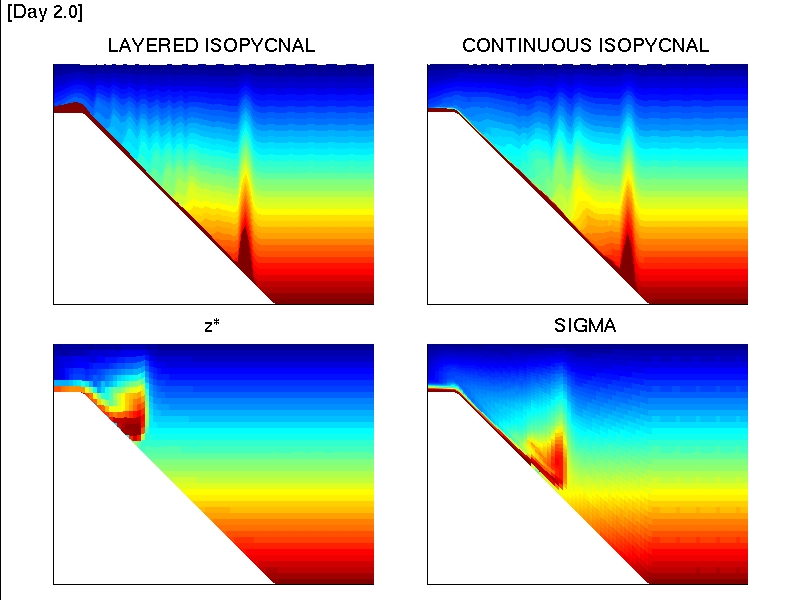GOLD

The Generalized Ocean Layered Model (GOLD) is a generalized Lagrangian-coordinate ocean model (Adcroft and Hallberg, 2006), and has now been released (in September, 2012) as a fully functioning publicly available ocean model. GOLD is currently capable of working in geo-potential (z*), terrain-following (σ), layered isopycnal and a continuous isopycnal (ρ) coordinates (see, e.g., White et al., 2009 and the animation at right), but the principle use of GOLD has been as an isopycnal coordinate model. GOLD has been successfully used for a wide range of idealized and realistic applications, including: as the ocean component of GFDL’s ESM2G Earth System model (Dunne et al., 2012; Hallberg et al., 2012); in explorations of the fate of the oil from the Deepwater Horizon (Adcroft et al., 2010); in examinations of the dynamics of overflows (e.g., Ilicak et al., 2011); and in studies of the effects of wave-driven mixing on the large-scale dynamics of the ocean (e.g., Melet et al., 2012). When used in realistic climate applications, GOLD has the advantage that its numerically induced diapycnal mixing is much smaller than with non-isopycnal-coordinate models (Ilicak et al., 2012), with resulting differences in the spun-up watermass structure of the ocean.
The GOLD code can be downloaded from https://code.google.com/archive/p/gold-omod/.
HIM
The Hallberg Isopycnal Model is an older prototype isopycnal coordinate ocean model, developed at GFDL up until 2005. It was originally available in C but converted to Fortran. Most of the capabilities of HIM are now available via GOLD.


